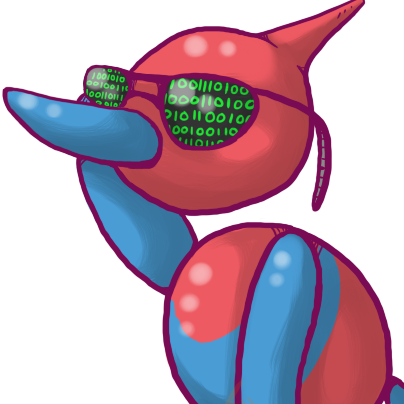I’m trying to plan a better backup solution for my home server. Right now I’m using Duplicati to back up my 3 external drives, but the backup is staying on-site and on the same kind of media as the original. So, what does your backup setup and workflow look like? Discs at a friend’s house? Cloud backup at a commercial provider? Magnetic tape in an underground bunker?
3 sticky notes telling me to “go get that incremental backup working”,
2 separate external hard drives,
1 month out of dateSame lol. Can’t be that catastrophic. Right? …. Right?
I use Proxmox Backup Server for my backups. Everything backups to 1 system at home. I then sync the data store to a little NAS I have at a family members house across town and also to a cheap storage VPS on the other side of the country. I also do a manual sync of the data store to a single external drive that I manually connect and disconnect.
None of my data hoarding files are backed up as that would cost way too much. That could change if I ever find a killer deal on an LTO8 or better drive and tapes.
I know that Hetzner has some decently priced Storage Boxes that you can mount using rclone and then backup to. Keep in mind that latency will be a factor so it could be slow.
I dump my encrypted data to someone who probably practices 3-2-1 rule (which is Backblaze for me). I mean, these guys back up data for a living.
All storage is on a Ceph cluster with 2 or 3 disk/node replication. Files and databases are backed up using Velero and Barman to S3-compatible storage on the same cluster for versioning. Every night, those S3 buckets are synced and encrypted using rclone to a 10tb Hetzner Storage Box that keeps weekly snapshots.
Config files in my git repo:
https://codeberg.org/jlh/h5b/src/branch/main/argo/external_applications/velero-helm.yaml
https://codeberg.org/jlh/h5b/src/branch/main/argo/custom_applications/bitwarden/database.yaml
https://codeberg.org/jlh/h5b/src/branch/main/argo/custom_applications/backups
https://codeberg.org/jlh/h5b/src/branch/main/argo/custom_applications/rook-ceph
Bit more than 3 copies, but hdd storage is cheap. Majority of my storage is Jellyfin anyways, which doesn’t get backed up.
I’m working on setting up some small nvme nodes for the ceph cluster, which will allow me to move my nextcloud from hdd storage into its own S3 bucket with 4+2 erasure coding (aka raid 6). That will make it much faster and also its cut raw storage usage from 4x to 1.5x usable capacity
I’ve a nightly cronjob that runs backup using rsync for my local, and an external HDD that I stash in my work locker that I bring home once a week or so to connect to the server, run a backup script (more rsync), then take it back to work. It’s not super sophisticated, but it works, and I have tested and restored from both the local and offsite backups.
I use immich and nextcloud for the clients (my wife and my parents know that I only take care about that data) and on the server side I use borgmatic which has a local repository on the second drive inside my nuc and a remote repository hosted by hetzner called “storage box” which supports borg native.
Yes the remote is out of my physical access, but borg is fully encrypted and for 4$/3.6€/month for 1TB I feel good.
Before I started with borg and hetzner I had a rsync based backup with an odroid hc1 hosted by my parents, but that doesn’t feel safe. Due to slow network by my parents I had to sync my local backup instead of a second backup from the real data and the monitoring was also very bad.
From my point of view: You have no backup, if it is not automated and you have no monitoring.
1 backup on a local, Independence disk. 1 backup on a HDD connected to an OpenWRT router at the other end of the house 1 backup on my remote vps.
Restic+backrest
Sftp for remote endpoint
All my video media that’s easier to replace than preserve is on my NAS running openmediavault with mergerfs. If I lose a drive I can always just, you know, torrent the tv show again.
My main PC (everything except the Steam game install directory) is backed up through KopiaUI to a folder on that mergerfs array that contains media that’s difficult/impossible to replace. Daily incremental backups.
That folder is mounted on my PC through DOKAN, which tells Windows OS that it’s a local resource (it does this more thoroughly than just assigning a drive letter to a NAS folder through Windows’ built-in system). The PC, including the “sensitive NAS media” folder, is then backed up to Backblaze’s personal backup service ($99/yr, unlimited size with one-year versioning). The DOKAN step is required for this, since Backblaze doesn’t support mounted NAS drives or non-Windows systems (presumably they don’t want to use space on versioned encrypted backups of hundred-terabyte pirate movie collections).
Oh, and my phone does one-way Syncthing to my PC, thus putting its files on the PC for Kopia and Backblaze to do their thing.
I use Kopia to B2, then on a monthly basis I copy the current Kopia repo to an external drive that’s otherwise kept offline in my house.
All persistent storage from my dockers are in a folder. All I have to backup everything is backup this one folder along with my docker compose files (in git).
Locally there are zfs snapshots (autosnapshot) and for remote I use borgmatic.
Borg to :
- Local server
- Friends server
- Borgbase
I’ve never heard of Borgmatic before… How’s it work?
DO NOT follow my lead, my backup solution is scuffed at best.
3:
I have:
- RAID1 array w/ 2 drives
- Photos on the device that took them
- Photos on a random old hard drive pulled from an ancient apple mac.
2:
I’ve got a hard drive and flash memory?
1:
Don’t have this at all, the closest is that my phone is off-site half of the day.
Real selfhosters know
iDrive e2 with duplicati and manually to an external SSD with rscyn every so often.
I was planing on asking a friend to setup a server at their home, but I feel somewhat comfortable with the current solution.
All my systems are backed up with “rsnapshot” to a file server. File server is backed up to backblaze with duplicacy.
Sometimes: a laughing hyena.
If you don’t have tested backups, you don’t have a backup.
- User devices (main workstations, phone photos, etc)
- Local NAS (sync w/ #1, backup to #3)
- Cloud backup w/ commercial provider






